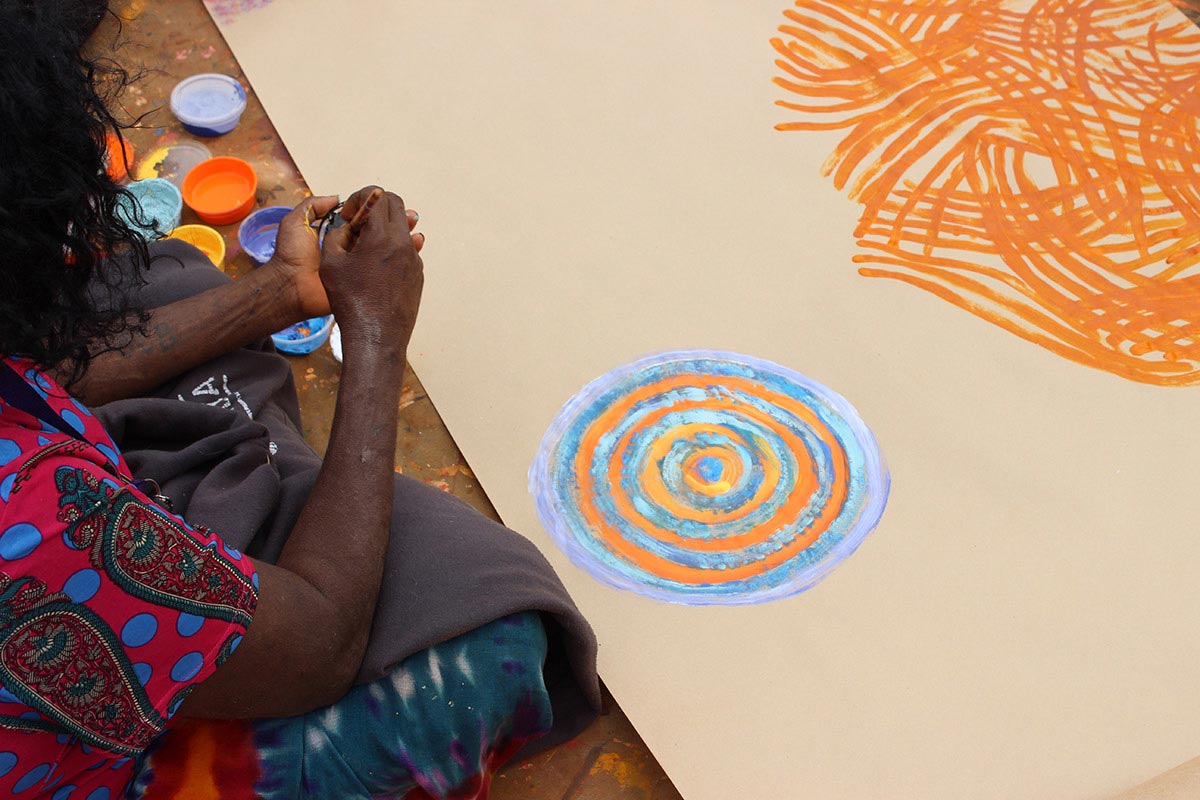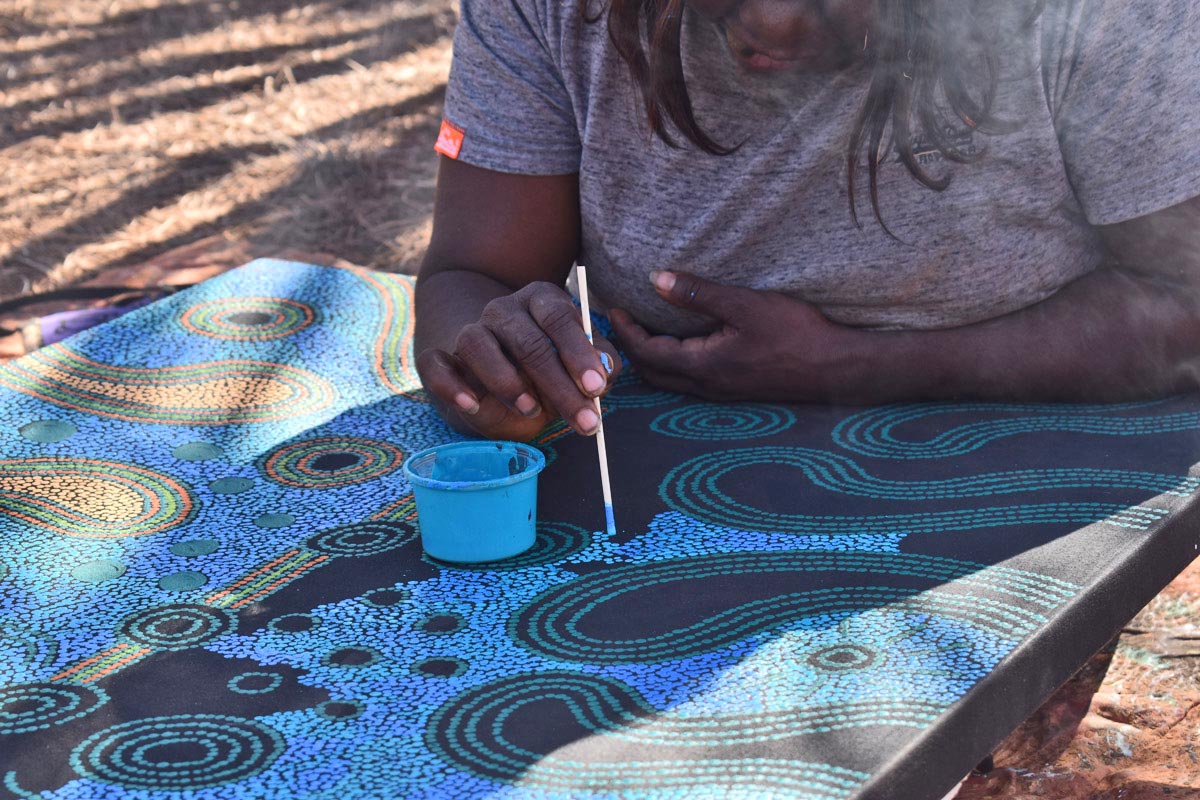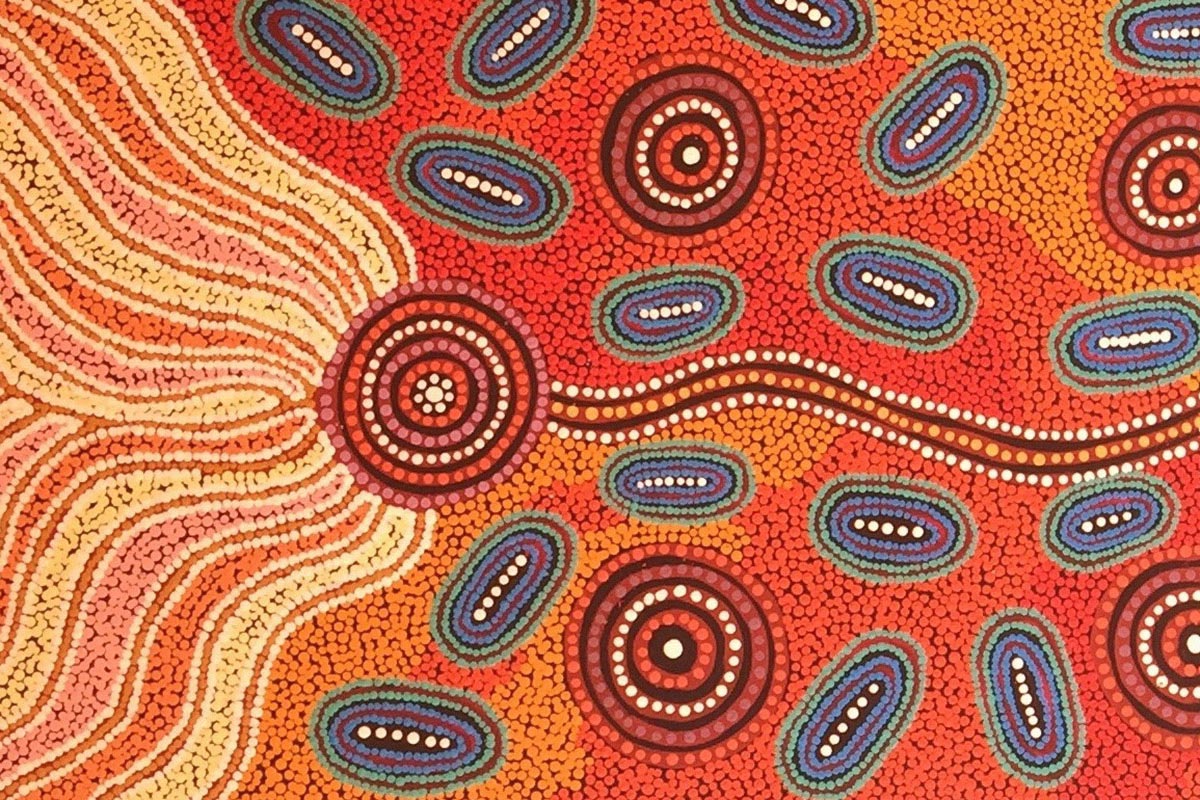Dot Painting
Dot painting is a recognized artistic style used by many Australian Aboriginal artists. While Aṉangu have used dots in ceremonial body designs for millennia, they were not traditionally used in cave paintings. Contemporary dot painting has evolved into a new way of storytelling through canvas and paint.
Dot painting originated in 1971 in Papunya, near Alice Springs, when Geoffrey Bardon encouraged his students to create a wall mural using their children’s Tjukurpa (stories). Bardon then encouraged his students and other community members to paint on canvas and other materials. However, concerns arose when Aboriginal artists realized that Westerners, Aboriginal people from other tribes, and individuals of the opposite gender could see their sacred objects and motifs.
Aboriginal artists wanted to ensure that Tjukurpa, which is meant to remain within family groups, was not viewed by outsiders or people from other lands. It was also essential that men and women did not see stories belonging to the opposite gender.
To continue developing in the art world while protecting their sacred knowledge, Aboriginal artists decided to hide their sacred objects and motifs by covering them with intricate dots, concealing their true meaning.
Beryl De Rose working carefully on a new painting Photo Kelly Butler © Walkatjara Art Uluru
Detail of Puli Mankurpa (Uluru, Kata Tjuta & Atila) by Beryl De Rose; 46cm x 183cm Acrylic on Canvas




